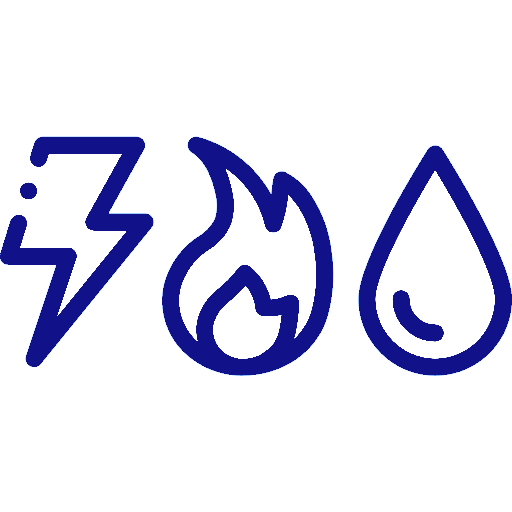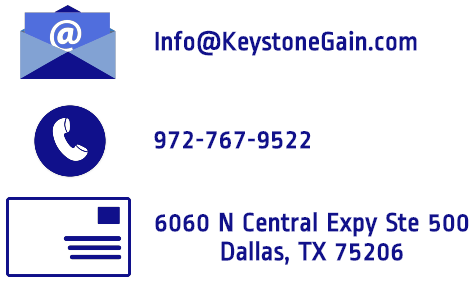Corporate Loans
Better Corporate Loans
Corporate loans for working capital, equipment financing, acquisition financing, and other commercial purposes are regularly used by businesses. The different collateral requirements, personal guarantee obligations, and other lender requisites make the difference between loan approval and denial. Similarly, the different interest rate, maturity, and repayment schedule, make the difference between growth capital and costly borrowing. Keystone Financial Services (‘KFS’) designed the Funding Wizard®, a loan-matching platform, to increase funding probability and enable corporate borrowers to shop for the best credit on a lender network.
Corporate Loans – Common Types

Corporate Loans
A term loan is a monetary loan that is repaid in regular payments over a set period of time. Interest rate may be fixed or floating.
- Purpose: Expansion, dividends, buyouts, refinancings, etc.
- Typical Collateral: All asset lien, real estate, equipment, other fixed assets
- Term: 1 – 10 years
- Amortization: 3-7 years
- Grace period (interest only): 6-12 months
- Pricing: Prime rate plus 0%-2%
- Loan size: $1 Million to $100+ Million
A Line Of Credit (‘LOC’) is a preset amount of money that a lender has agreed to lend a borrower. The borrower can draw from the line of credit when it needs cash, up to the maximum amount. In a Revolver LOC, money can be borrowed again after it was repaid. Interest is charged only on the amount borrowed.
- Purpose: Working capital (inventory, receivables), cash flow management, etc.
- Typical Collateral: All asset lien, inventory, receivables
- Term: 1 year (renewable)
- Amortization: none
- Interest: Monthly
- Pricing: Prime rate plus 0%-2%
- LOC size: $1 Million to $100+ Million
A bridge loan is a short-term loan used until the business secures permanent financing, sells an asset, or removes an existing obligation. It allows the borrower to meet current obligations by providing immediate cash flow. Bridge loans are short term, have relatively high interest rates and fees, and are usually backed by some form of collateral.
- Purpose: Temporary finance
- Typical Collateral: Real estate, inventory
- Term: Up to 3 years
- Amortization: none
- Grace period (interest only): 6-12 months
- Pricing: Prime rate plus 3%-6%
- Loan size: $1 Million to $100+ Million
Factoring is a financial transaction in which a business sells its accounts receivables to a third party (called a factor) at a discount. Businesses use factoring as short-term borrowing in order to meet immediate cash needs. Factors often charge higher interest rate and require more documentation and administrative work (e.g. assigning invoices, informing customers of the factoring arrangement) than Line of Credit (‘LOC’) financing. Therefore, the loan marketplace platform will also try to match factoring borrowers with Line of Credit funding solutions.
- Purpose: Short-term borrowing, cash flow management
- Typical Collateral: All asset lien, receivables sale
- Term: 1 year (renewable)
- Amortization: none
- Interest: Discount at inception
- Pricing: 10%-15%
- LOC size: $1 Million to $100+ Million
Leasing is financing arrangement in which one party (‘lessee’) agrees to rent property owned by another party (‘lessor’). It guarantees the lessee use of an asset and guarantees the lessor regular payments for a specified period in exchange. In a Leasing transaction the lessor owns the asset, which reduces lending risk, and also reduces lessor’s tax liability through depreciation expense. These benefits are transferred to the borrower through lower interest rate.
- Purpose: Equipment and real estate financing
- Typical Collateral: Lessor is the owner of the asset
- Term: 3 – 30 years
- Amortization: 3 – 30 years
- Interest: Monthly
- Pricing: Varies
- LOC size: $1 Million to $100+ Million
A property is considered owner-occupied when 51% or more of the property’s space is occupied by the owner’s business, and the owner pays at least 51% of the rent. The collateral for owner-occupied loans is the real estate. The loan is repaid with cash flow generated by the business operations, and rent collected from other tenants.
Lenders consider owner-occupied loans as lower risk, because the owner is committed to the property, both as the landlord and a major occupant, and because the business’s cash flows support debt service payments.
- Purpose: Acquisition, expansion, dividends, buyouts, refinancings, etc.
- Typical Collateral: First mortgage on the commercial property
- Term: 5 – 20 years
- Amortization: 15-25 years
- Grace period (interest only): None
- Pricing: Prime rate plus or minus 0%-2%
- Loan size: $1 Million to $100+ Million

Corporate Loan Purposes
Acquisitions
Dividends
Equipment
Growth Capital
Leveraged Buyouts
Office/Plant Expansion
Retail Inventory
Working Capital

Corporate Loan Structures
Senior Secured & Unsecured
Junior Secured & Unsecured
Second Lien Loan
Mezzanine Financing
Senior Stretch
Asset Based
Unitranche

Lender Types
National Banks
Regional banks
Community Banks
Asset-Based Lenders
Mezzanine Lenders
SBICs
BDCs
Other non-bank lenders
Corporate Borrower Profile
- Revenue over $2 Million
- US-based Companies
- Loan Size Over $1 Million
The Funding Wizard® is most effective for middle market businesses which are based in the US. The lender network supports corporate loans for all industries.
Corporate Borrowers’ Industries

Manufacturing

Admin & Support

Retail Trade

Wholesale Trade

Agriculture

Transportation

Professional Services

Educational Services

Mining, Oil & Gas

Utilities
Is Your Deal Financeable?
Before engaging with lenders, have our transaction team review your company profile and financing request.
Based on your company profile, our professionals will estimate debt capacity, cost of capital, and repayment terms.

Lender Network
There are many bank and non-bank corporate lenders in the market, each with different lending criteria and costs. The different loan-to-value requirements, personal guarantee obligations, and other lender requisites make the difference between loan approval and denial. Similarly, the different interest rate, maturity, and repayment schedule, make the difference between growth capital and costly borrowing. Click bellow to learn more about the lenders on the platform.
Borrowing Preparation
Some businesses choose to prepare for borrowing before approaching lenders. GAAP-compliant financial statements, senior executive presence in negotiations, and better financial management, increase funding chances and improve funding terms. Click below to see which services can get you a better loan.









